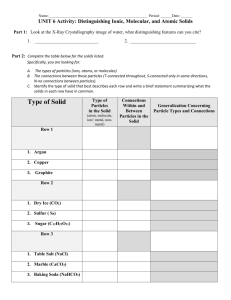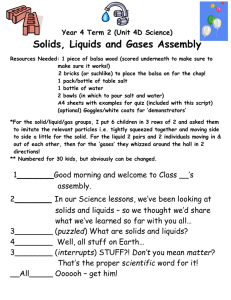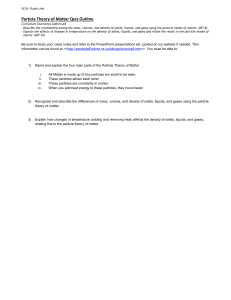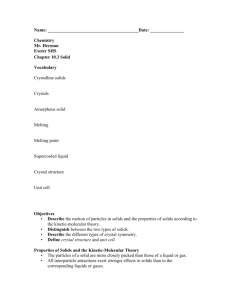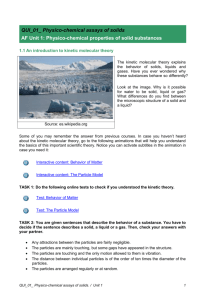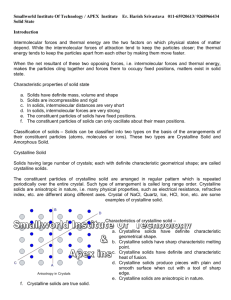Activity: Distinguishing Ionic, Molecular, and Atomic Solids
advertisement
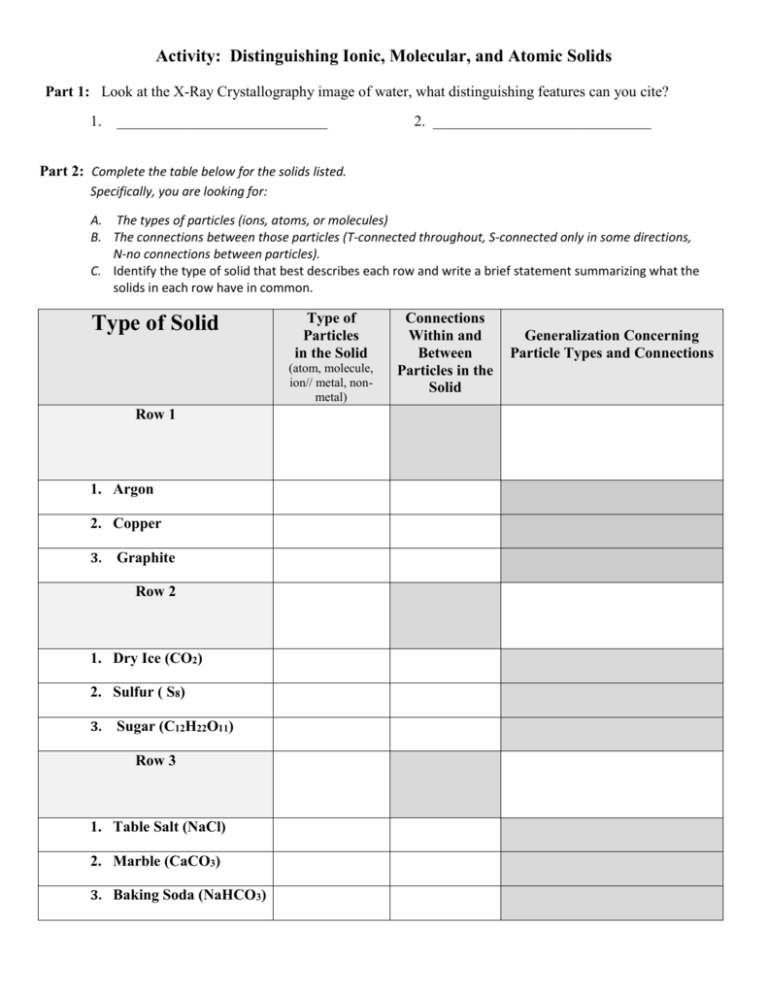
Activity: Distinguishing Ionic, Molecular, and Atomic Solids Part 1: Look at the X-Ray Crystallography image of water, what distinguishing features can you cite? 1. ____________________________ 2. _____________________________ Part 2: Complete the table below for the solids listed. Specifically, you are looking for: A. The types of particles (ions, atoms, or molecules) B. The connections between those particles (T-connected throughout, S-connected only in some directions, N-no connections between particles). C. Identify the type of solid that best describes each row and write a brief statement summarizing what the solids in each row have in common. Type of Solid Type of Particles in the Solid (atom, molecule, ion// metal, nonmetal) Row 1 1. Argon 2. Copper 3. Graphite Row 2 1. Dry Ice (CO2) 2. Sulfur ( S8) 3. Sugar (C12H22O11) Row 3 1. Table Salt (NaCl) 2. Marble (CaCO3) 3. Baking Soda (NaHCO3) Connections Within and Between Particles in the Solid Generalization Concerning Particle Types and Connections Part 3: On a white board, write a set of “Rules for Identification” of these 3 categories of solids. Your Rules for Identification must: Allow for correct classification of any substance. Identify the type of particles involved in the class of solids. Specify the types of connections or lack of connections between particles belonging to this category. Part 4: Write the “Rules for Identification” of the 3 classes of compounds agreed upon by the class. Atomic Solids - ________________________________________________________________________ _____________________________________________________________________________________ Molecular Solids - ______________________________________________________________________ _____________________________________________________________________________________ Ionic Solids (Formula Unit Solids) - ________________________________________________________ _____________________________________________________________________________________
